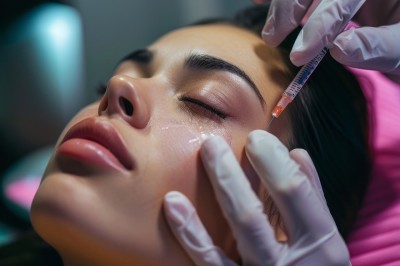What is fibroadenoma?
Fibroadenomas are benign breast tumours commonly found in young women. Fibroadenoma means a tumour composed of glandular (related to gland) and fibrous (containing fibres) tissues. Breast fibroadenomas, abnormal growths of glandular and fibrous tissues, are most common between the ages of 15 and 30. They are found rarely in postmenopausal women. Described as feeling like marbles, these firm, round, movable, and rubbery lumps range from 1 cm-5 cm in size. Giant fibroadenomas are larger, lemon-sized lumps. Usually single, nearly 10-15% of women have more than one. While some types of breast lumps come and go during the menstrual cycle, fibroadenomas typically do not disappear after a womans period, and should be checked by a doctor. Fibroadenomas are one of the findings that can be seen on your mammogram. They are benign (not cancerous) breast tumors that are made of glandular and fibrous breast tissue. Fibroadenomas can occur alone, in groups or as a complex. If you have multiple or complex fibroadenomas, this may raise your risk of breast cancer slightly. Fibroadenomas may occur in girls and women of any age during their reproductive years. After menopause, the tumors often regress. Fibroadenomas rarely appear in older women; therefore, any new solid lesion in an older woman should be considered malignant until proven otherwise. Cancers are the most common solid masses in postmenopausal women. Fibroadenoma is the most common benign tumor of the breast and the most common breast tumor in women under age 30. Fibroadenomas are usually found as single lumps, but about 10-15% of women have several lumps that may affect both breasts. Estrogen sensitivity is thought to play a role in fibroadenoma growth: some tumors may increase in size towards the end of the menstruation or during pregnancy. After menopause, many fibroadenomas spontaneously shrink due to lower estrogen levels. Hormone therapy for postmenopausal women may prevent fibroadenomas from shrinking. The typical fibroadenoma is a round or ovoid, rubbery, discrete, relatively movable, nontender mass 1-5 cm in diameter. It is usually discovered accidentally. Clinical diagnosis in young patients is generally not difficult. In women over 30, cystic disease of the breast and carcinoma of the breast must be considered. Cysts can be identified by aspiration or ultrasonography. Fibroadenoma does not normally occur after the menopause, but may occasionally develop after administration of hormones. Particularly in older women the echo structure may be more heterogeneous due to fibrosis and calcifications. In such cases there may be posterior shadowing. Alternative treatments for breast fibroadenomas include a low-fat, high-fiber, vegetarian-type diet; a reduction in caffeine intake; supplementation with evening primrose oil (Oenothera biennis), flax oil, or fish oil and vitamins E and C; and the application of hot compresses to the breast. In addition, a focus on liver cleansing is important to assist the body in conjugation and elimination of excess estrogens. Botanical remedies can be useful in hormone balancing, as can acupuncture and homeopathy. Massaging the breasts with castor oil, straight or infused with herbs or essential oils, can help fibroadenomas reduce and dissipate, as well as keep women in touch with changes in their breast tissue. A fibroadenoma is usually diagnosed through clinical examination, ultrasound, mammography and often a biopsy sample of the lump. Their incidence declines with increasing age, and they generally appear before the age of 30 years, probably partly as a result of normal estrogenic hormonal fluctuation. It is found most often in teenagers and the incidence is increased slightly in those taking hormonal contraception. A fibroadenoma is not commonly associated with fibrocystic breast disease and has no known links to cancer. Read about Breast Enlargement. Also read about Home Remedies and Hair Loss Products Hair Loss Solution





























